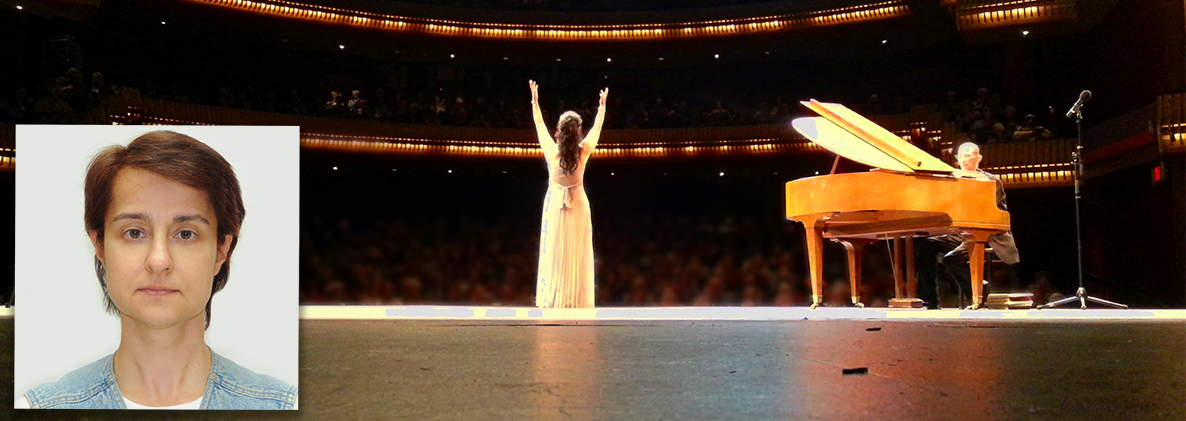Q&A with Irina Isaakyan

Irina Isaakyan, incoming Senior Research Associate at CERC Migration, has straddled teaching and research since the early days of her academic career. Initially an adult language teacher, she set out to pursue a PhD in education until her supervisor at the University of Edinburgh suggested she use a narrative biographic method to study the mobility of academic migrants. Now an expert, Irina recently taught the narrative biography method in a Migration Research Gym from her base in Italy. She is scheduled to arrive in Toronto in early 2021 to take up her position with the CERC team.
Can you explain what is meant by the narrative biographic interview and why it is one of your preferred methods to use in research?
The narrative biographic interview situates the phenomenon under investigation at key turning points in the informants’ life and then draws on their reflections of that moment. This allows us to see the impact of the phenomenon under study upon the lives of the people we are investigating. I use this method because I can gain deep insights into someone’s life story.
As a postdoctoral fellow at the European University Institute (EUI), you applied your narrative biographic method to study the mobility of North American and British women in southern Europe. Can you share some insights that you uncovered?
I conducted interviews of migrant women working across a variety of professional fields based in Greece and Italy. One would assume that these educated women were migrating for careers. Instead, I found that the majority were following partners or travelling in search of romance – so they fit into the typical category of marriage migration. Many had the illusion that they would find that perfect partner in Italy or Greece.
This study showed me how the powerful myths that are disseminated through the mass media are influencing lives, even of those who are highly educated. It also showed me how fragile women were, that they often would make drastic changes and put everything at risk to remove themselves from a painful situation. And I learned just how inexperienced these new migrants were as cultural learners. We usually think that it is hard for a migrant to adapt when moving from an undeveloped country to a more modern, developed country; but mastering technological difference is much easier than mastering intercultural communications.
How did your work with Anna Triandafyillidou at EUI expand your area of interest?
I contributed to a project led by Anna that began almost eight years ago called ITHACA (or Integration, Transnational Mobility and Human, Social and Economic Capital Transfers). The project investigated migration in general sociological terms with a focus on the idea of social remittances – how does a migrant act as a broker of ideas between her home country and the new destination country? We began to ask, “What is the transnational experience of migrants with highly specialized careers like opera singers?” and so began my interest in elite migration.
Why are you interested in elite migration when that group represents such a small part of the population?
In spite of their glamorous careers, elites have some very similar problems to other types of migrants, and yet also face different challenges. Elites can include opera singers, sports stars, musicians. They are on the front page of nation building because countries hold them as examples of national strength. Their experience helps to inform our understanding of the transnational experience of migrants and the role of networks in the integration process.
This is a new area of focus for me, and so I do not yet have all the evidence, but I do hypothesize that elites are in fact incredibly vulnerable, given that their careers can be affected by aging or health issues and they must live in significant isolation as they have less opportunity for integration into the local culture, even after living in a country for years.
What direction will you take with the CERC program?
I intend to continue developing my research theme of elite migration. I see a lot of potential in Canada as a host country and in North America broadly, particularly since so many of the world-leading music producers and talent are based in North America. I also want to look at the process of networking and integration for athletes, perhaps in areas like hockey. I also will explore how experiences of elite migrant women versus men are different or how migrants of different ethnic origin countries experience migration differently.
What is one outcome you would like to have as a result of your research?
I am interested in producing a book, not just for the benefit of the academic reader, but also the public.
I hope to disseminate my research findings through workshops and teaching at Ryerson; they provide an invaluable opportunity for me to learn from students. I also hope to explore a variety of creative ways to disseminate the research findings through engagements like ethnodrama or ethnotheater.
Given what you have learned about the challenges of integration for academics, what advice would you give your fellow CERC Migration colleagues who are also migrating to Toronto, Canada?
First of all, come with an open mind. Accept the fact that this is a new culture that must be learned, even if you are an excellent speaker of English. You have to be open to criticism and learning; everything can’t come out quickly. You will need to make some mistakes. Integration means patience and a lot of learning – a time-consuming but rewarding process.
This interview has been edited and condensed for clarity and length.